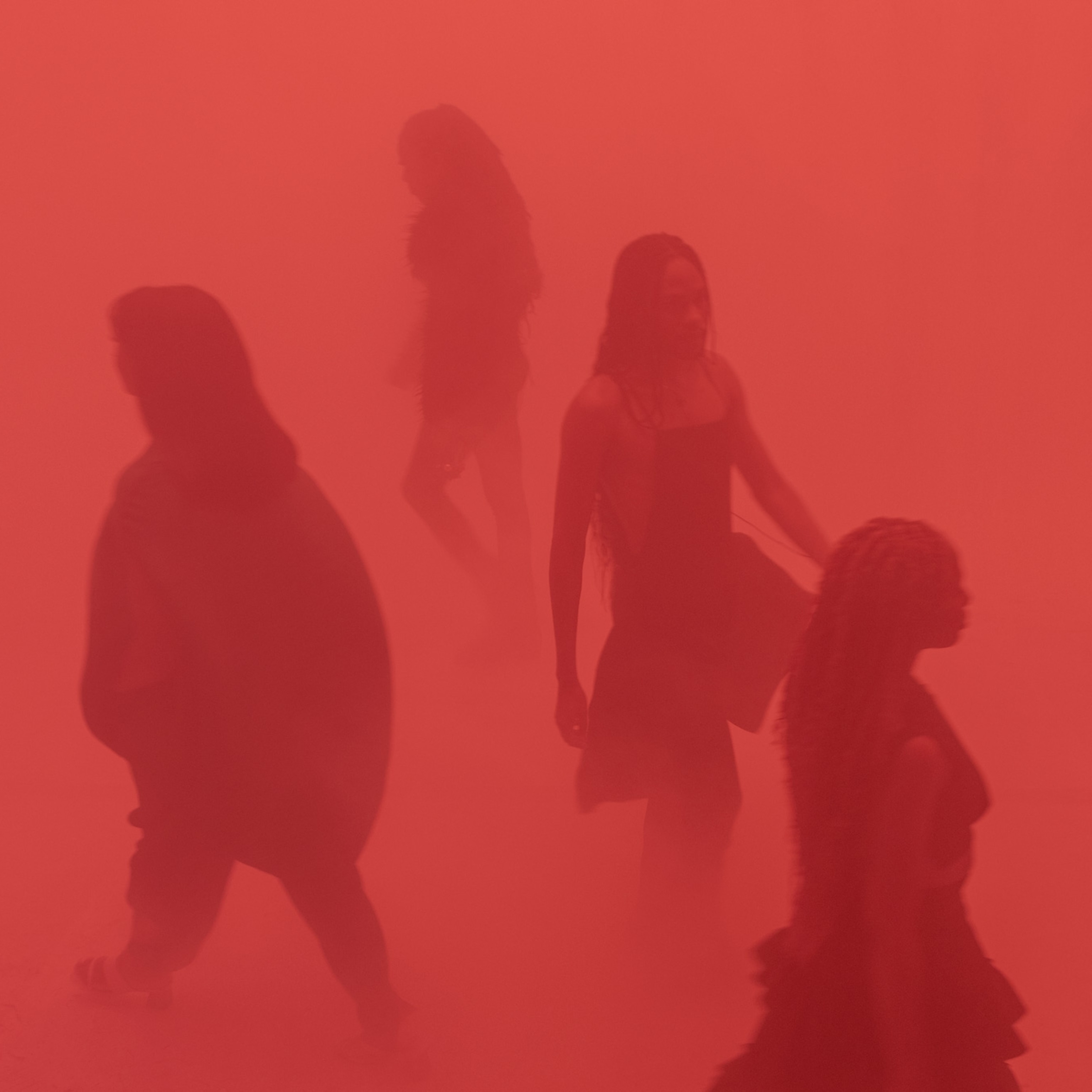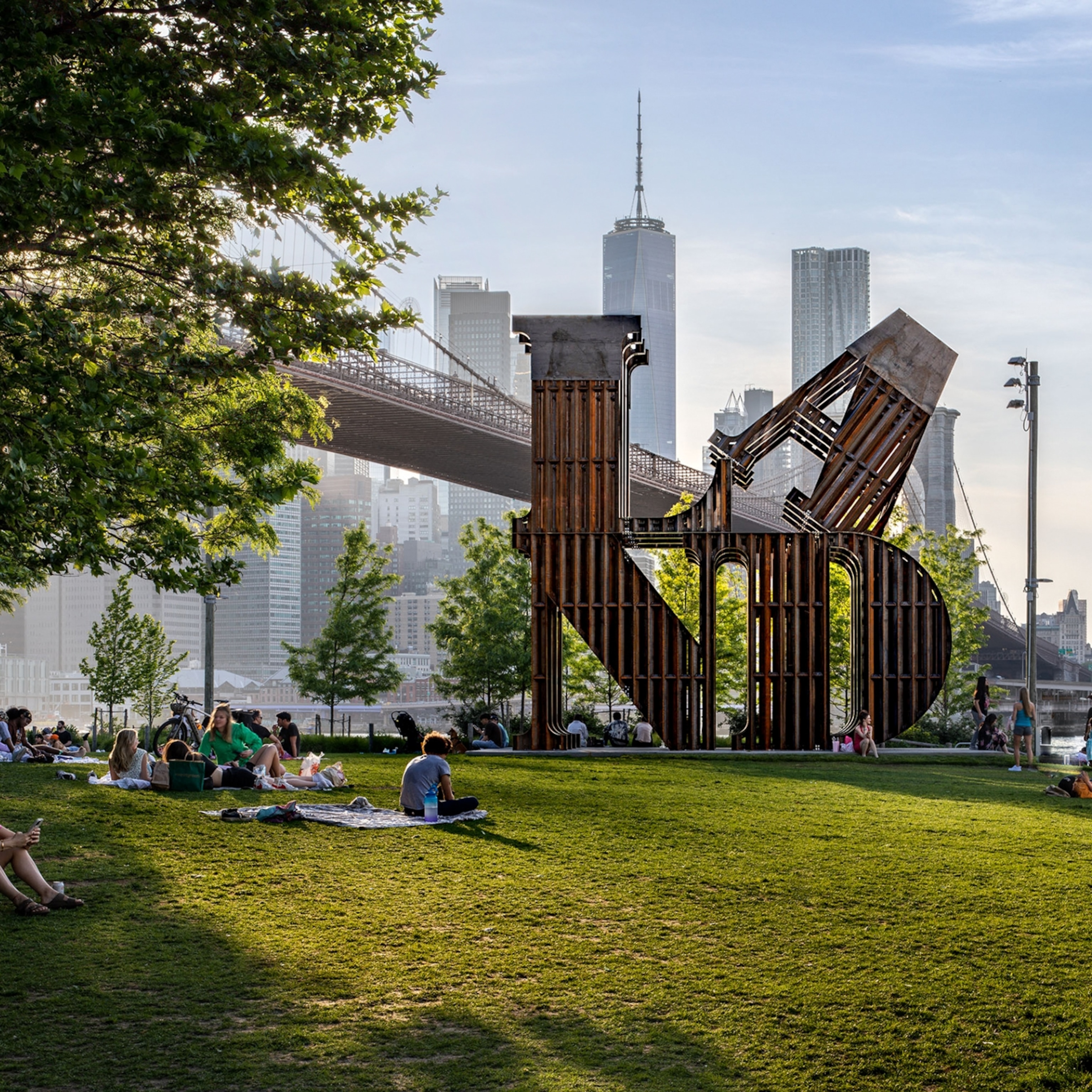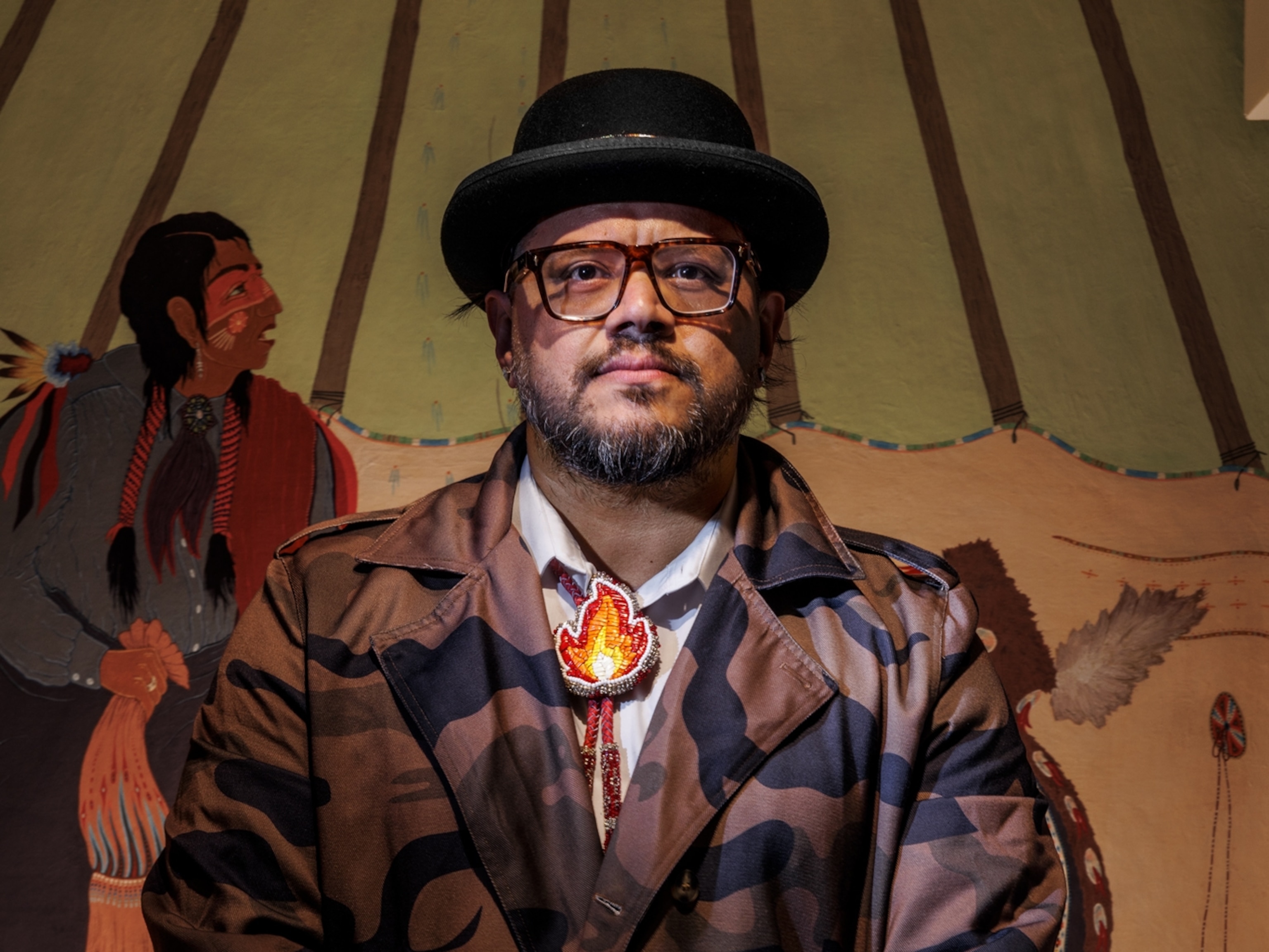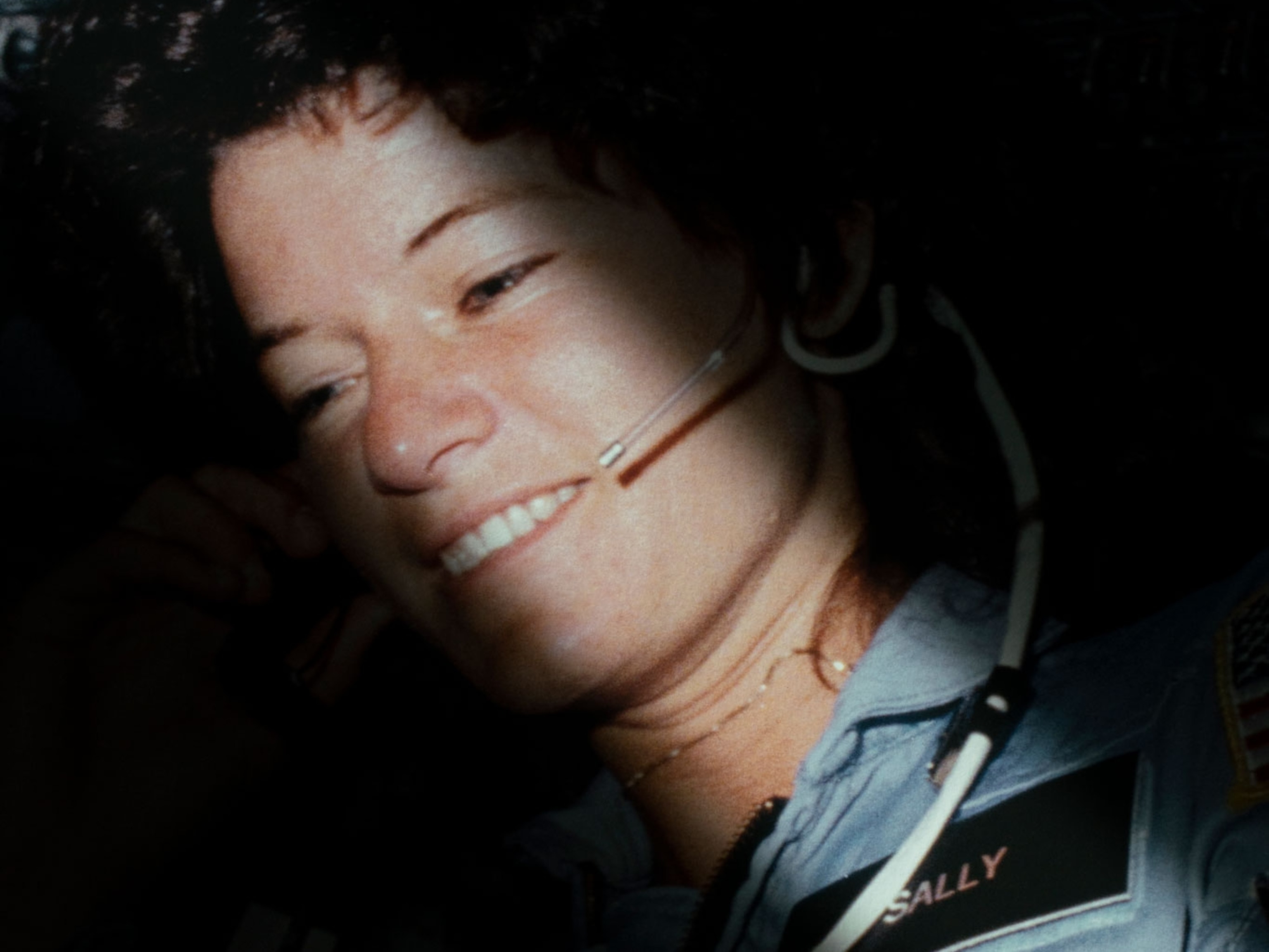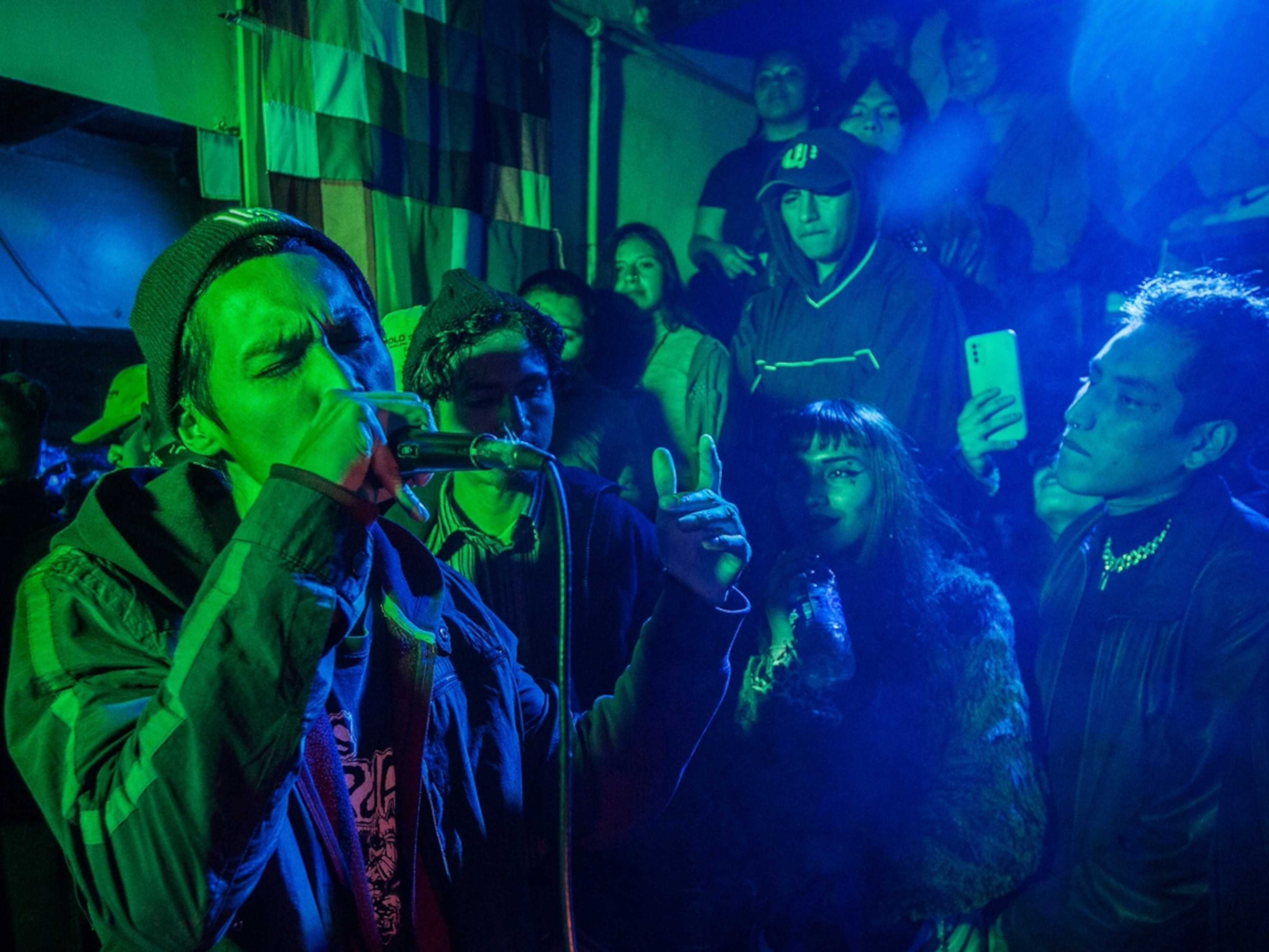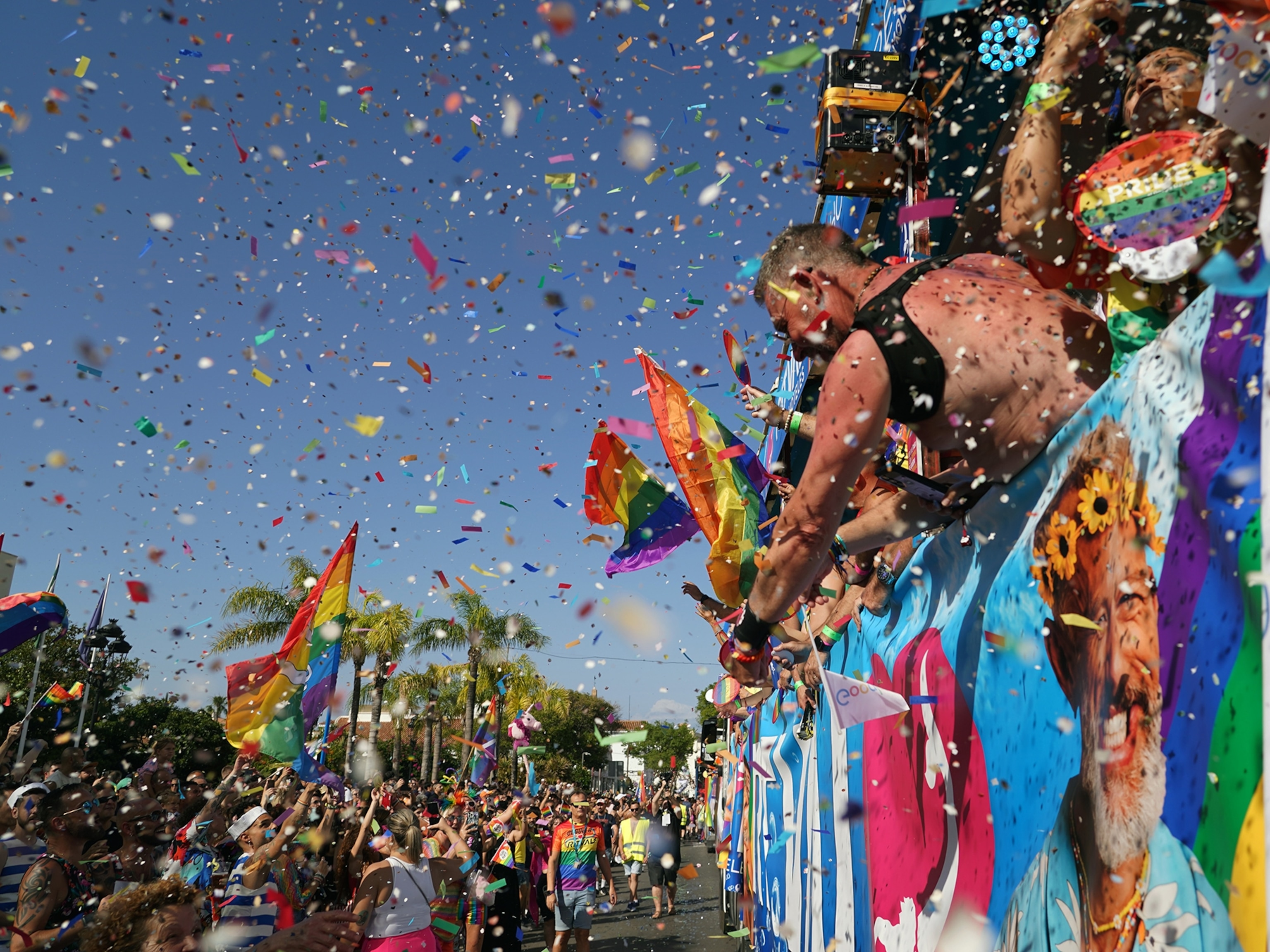What is queer Indigenous art? A conversation between two leading Nigerian creatives
Author Akwaeke Emezi and designer Adeju Thompson reflect on their paths to finding the audacity to produce queer, Indigenous work.
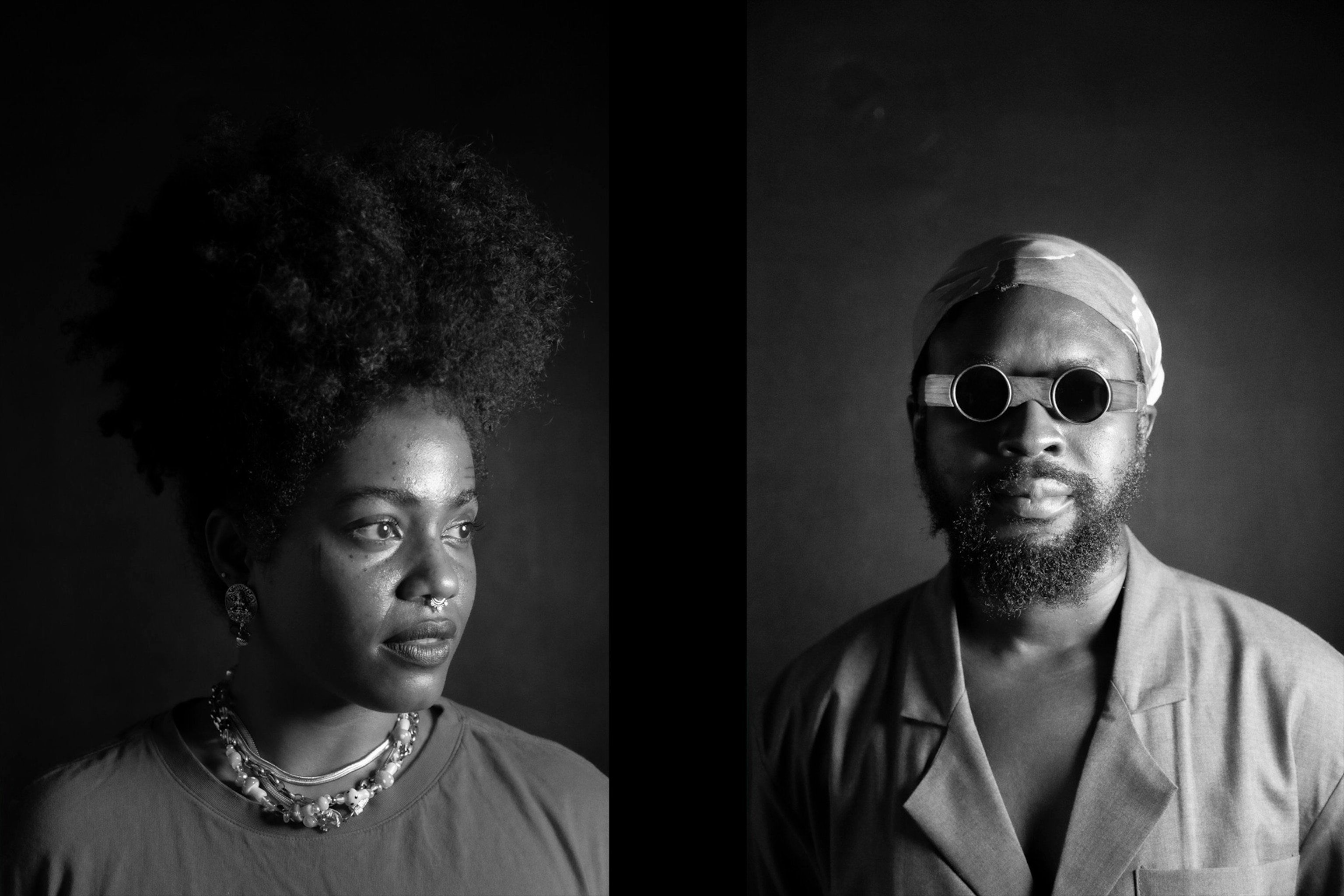
In Adeju Thompson’s design studio, the walls and ceilings are a rich cobalt blue and every surface is covered with art, from sculptural bronze pieces to piles of books and family photographs. An artisan from his team sits at a large table, using a feather to paint careful lines of cassava paste on a sea of white fabric, creating àdìre cloth with a traditional Yoruba technique. This resist-dyed fabric will be transformed into garments for Lagos Space Programme, Thompson’s luxury fashion label.
I’m returning to my home country from New York, a rare visit to Lagos since I launched my literary career in 2018. In the years since, I’ve published seven more books and been on the cover of Time magazine, but as a queer Nigerian author and artist who chose to leave, exile still breathes down my neck. Nigeria isn’t a safe place for its queer and trans citizens, yet other queer Nigerian creatives remain at home either by choice or circumstance. It’s special to see someone like Thompson creating genderless clothing collections in Lagos—more particularly, making art rooted in cultures that our own people try to deny us.
In Thompson’s hands, Lagos Space Programme is African design spun into the future, experimental and singular. It is not only a ready-to-wear brand but also a concept patterned in history. With this body of work, Thompson recently became the first African designer to win the International Woolmark Prize, a prestigious award for rising stars in the fashion industry.
Walking into his studio on the Lagos mainland feels like entering a pocket of weighted and delightful possibility. We sit on a couch draped in deep-blue àdìre, drinking cups of tea as we chat about the evolution of culture and working from our respective Indigenous centers as an Igbo artist and a Yoruba designer.
This interview was edited for length and clarity.
Akwaeke Emezi: I think about centers in my work because of that Toni Morrison quote where she said, “I stood at the border … claimed it as central … and let the rest of the world move over to where I was.” So, with decolonization, it’s defined according to the white center we are moving away from, right? I feel like re-indigenization focuses on the center that we’re moving towards. What center are you moving towards?
Adeju Thompson: I grew up bullied and very insecure, very introverted. When I went to school in the U.K., my professor could see where my work was heading, and he asked if I knew about the Antwerp Six, about Yohji Yamamoto and the Japanese designers. These artists’ work was different from anything I experienced in fashion design in Nigeria. It was very introspective, very vulnerable, and it reflected that moment in my life. I wanted to be a Nigerian version of it.
I’m now obsessed with Yoruba culture; it’s given me so much pride in myself and how I put myself into the world. But initially, I consumed Yoruba culture on the surface. People being loud or very colorful—branded with Gucci glasses and loud lace—I never saw myself in that. A few months back, though, I was shopping with my cousin at a Prada shop, and I realized I like shiny things now [laughter].
Emezi: You’ve come back around.
Thompson: I tell people I’m in my Yoruba auntie energy ... I can really design my life how I want it. I can find these shiny things very appealing, but I’m still that guy that’s emotional and sensitive.
Emezi: When I think of the shininess, I think of it as a very old culture of adornment, right? It may look different in a contemporary skin, but the essence of it is ancient.
(Peru's Quechua rappers have the world taking notice)
Thompson: Look at how these women are dressed! Look at the drama of the draping! This is so romantic, you know. Look at how people wear the agbadas. Look at the intensity. Do you know what it means to put yourself out in the world in this way, to carry yourself in this very powerful way?
I hadn’t seen that at first, because when you go through a lot of trauma, you close yourself up. From when I was a child, I never had a problem with being gay. But there was still a lot of growth to happen.
I was actually very anxious before you came. I was like, I wonder how Akwaeke will feel about this. When I discovered nonbinary as an identity, it felt like it was me—like I had found something I could use to protect myself and fight back against the trauma of my masculinity growing up and not feeling like I was accepted.
Emezi: Do you still feel like you need that identity as protection?
Thompson: No, no. At this point in my life, I now have the audacity to design my masculinity. I like the fact that I was allowed to go through my journey as an individual to get to this point, but I don’t want my truth to feel like it’s disrupting other people’s identities.
Emezi: The year that my novel Freshwater came out was the year that I said I was nonbinary. I was trying to build bridges of legibility between myself and this public that was now perceiving me.
After a few years, I was like—you know what? If I’m really moving towards this Indigenous center, then I want to abandon the language that doesn’t belong there. So, it’s not that I’m nonbinary. I don’t have a gender because I’m a spirit, and spirits don’t actually have genders. “Identify” is a useless verb to me. Either I am the thing or I am not the thing.
With re-indigenization, people usually think about it as a linear return. So much of your work is acknowledging the past, the histories, these really ancient techniques—but very much looking to the future.
Thompson: My work is really about all the culture I consume—whether it be art, cinema, music—filtered through a Nigerian lens. I like that I can put myself out there now and say this is what it means to me, to be a queer designer creating work. I hope that another queer designer is coming behind me and can say, I love Adeju for what he did, but this is my own version.
Emezi: Some people think that the only authentic culture is whatever existed when we were colonized, as if white people came and turned their gaze on us and we were frozen in amber.
Thompson: Apparently, our culture doesn’t evolve.
Emezi: I don’t think people realize that for centuries it was evolving. As Indigenous people, we create our culture every day. You are of the culture, therefore, anything you create is the culture.
Thompson: My new collection started when I went to the bookshop at Versailles. I was so impressed by the materials, the opulence of everything. I went down that rabbit hole and came up with fusing Yoruba dress codes with Eurocentric tailoring to create a new visual language.
There’s this Yoruba festival called Ojude Oba that happens once a year. It’s such a beautiful spectacle. Families parade themselves in front of the king, in front of the Yoruba world. With this collection, it’s about a fictional person who lives in European society but is very Nigerian and is preparing for the Ojude Oba festival.
(The Māori saved their language from extinction. Here's how.)
Emezi: There’s so much to be said about our parents’ generation, those who were in London and were very, very Nigerian. My father was one of them—very Igbo, and there’s no part of him that would ever stop being Igbo. There’s a story he tells about being at the visa office in London, and they told him he was eligible for a British passport. This man started shouting at them, “Did I ask you for a British passport? I have a Nigerian passport!” All the Nigerians who were queued up there started cursing my father, like, “You’re a foolish man. How can you turn down something like this?”
Thompson: As young people, now we can educate ourselves on our culture and realize, Wow, I’ve been lied to. How did I not know how powerful where I come from is?
Emezi: Because we’re not taught it.
Thompson: I’m very proud to be a Nigerian person. I went to the Ọ̀ṣun festival, and it was such a spectacle. There was a lot of lace, a lot of bronze. There’s this virgin who’s carrying a sacrifice of fruits and honey for Ọ̀ṣun. It’s very heavy, and she walks with the support of the community. In front of her is an entire army of women with daggers and a brass mirror—like, don’t mess with us. As a designer, that comes back into my collection, that helps with my own world-building. I want to educate people and highlight Africa’s progressive identity precolonization—how the barbaric people were the colonizers.
Emezi: When you started doing this research and introspection, do you feel like it changed your spirit?
Thompson: What the colonizers really tried to do was strip us of our identity, so when you reclaim who you are, you come into yourself. For me, that’s meant that I’m bolder in my approach. When I’m designing my collections, I have no limitations. When I’m making àdìre, I’m radically thinking, What does àdìre designed by a queer person living now look like?
A version of this story appears in the July 2024 special issue on "Indigenous Futures" of National Geographic magazine.

